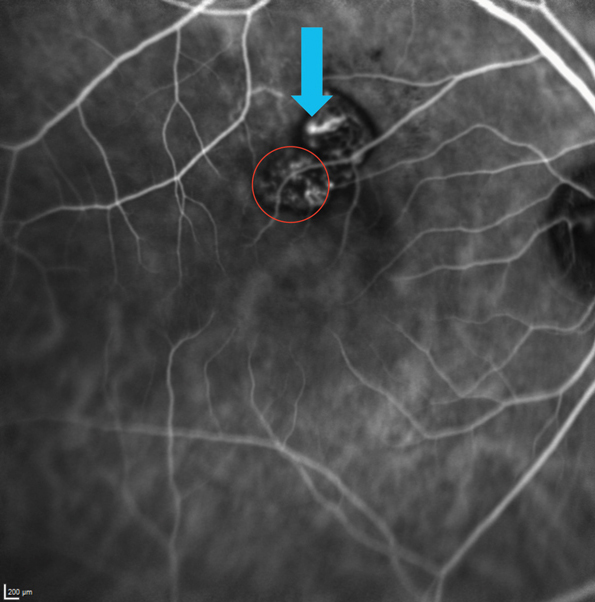 |
|
Asian patients have a higher prevalence of polypoidal choroidal vasculopathy, making fellow-eye involvement in nAMD less likely than in Caucasians. Their progression biomarkers appear differently, and experts recommend close monitoring for exudation. Photo: Jessica Haynes, OD. Click image to enlarge. |
Asian patients are less likely to have fellow-eye involvement in neovascular age-related macular degeneration (nAMD) than most Caucasian patients due to a higher prevalence of polypoidal choroidal vasculopathy (PCV), a recent study reported in Retina.
The researchers noted that the five-year incidence of exudation in the fellow eyes of 488 patients was 16.2%. They added that PCV compared with nAMD in the first eye was associated with a significantly lower rate of progression in the fellow eye (9.8% vs. 22.9%). Drusen, shallow irregular RPE elevation and pigment epithelial detachment (PED) were all associated with higher rates of progression. The researchers also observed a combination of soft drusen and subretinal drusenoid deposits, as well as multilobular and sharp-peaked PED subtypes associated with progression.
Additionally, PED, SIRE and new subretinal hyperreflective material occurred before exudation at 10, 11 and 6.9 months, respectively. “Increasing size of PED and [RPE elevation], coupled with the presence of multilobular or sharp-peaked PED, are warning signs of impending exudation, and such patients should be followed up more closely to prevent irreversible vision loss,” the researchers wrote in their paper.
“Traditional biomarkers of progression such as drusen and pigmentary changes identified based on Caucasian cohorts aren’t as useful in Asian patients with unilateral AMD,” they concluded. “This is likely due to the high prevalence of PCV in these cohorts. Other features and imaging modalities like OCT, in addition to clinical examination, are imperative to assess the risk of incident fellow-eye exudation.”
Teo KYC, Vyas C, Sun C, et al. Five-year incidence of fellow eye neovascular involvement in age-related macular degeneration and polypoidal choroidal vasculopathy in an Asian population. Retina. November 2, 2022. [Epub ahead of print]. |


